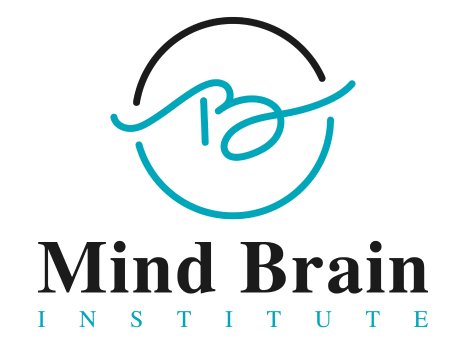- Posted By Dr. Anuranjan Bist
- Comments 0
How to Check Your Level of Depression: A Complete Guide
Do you have any idea how many individuals worldwide are struggling with depression? According to the World Health Organization (WHO), the figure reaches approximately 332 million individuals. And still, most people still ask themselves: “Am I just a bit stressed, or is this really an actual mental illness?”
The answer really does come down to determining your level of depression. It is often called the “silent epidemic” of our time. It’s a condition that’s invisible but slowly breaks a person down from within.
Just like we check our blood pressure or glucose levels to evaluate our physical health, mental health needs to be assessed in terms of whether you are mildly, moderately, or severely depressed.
Here, we will tell you plainly how to determine your level of depression, how to distinguish between sadness and clinical depression, which tests are most accurate, and when one should consult a professional.
Because, in the case of mental health, awareness is the key to healing.

Why It’s Important to Know Your Level of Depression
It is normal to be depressed at a breakup, layoff, or because of test anxiety. But when depression persists for weeks, interferes with daily life, and steals joy from living, it could be clinical depression.
You can measure how depressed you are, as it provides:
- Clarity: You will know if your symptoms are mild, moderate, or severe.
- Early Action: Knowing how to recognize signs early in life is having the power to act early before depression can set in.
- Empowerment: Being in charge of your mood empowers you.
As the saying goes, “A stitch in time saves nine.” The identification of depression early in life saves years of suffering in silence.
Learning About Depression Signs
Before you can even measure the degree to which you are depressed, warning signs have to be discovered. Psychiatrists search for a minimum of five such signs that endure for more than two weeks:
- Excessive sadness or emptiness
- Loss of interest in activities once found enjoyable
- Weariness and energy decline
- Sleeping disturbances such as insomnia or hypersomnia
- Loss of appetite (eating too little or excessively)
- Inability to concentrate
- Helplessness or excessive guilt
- Restlessness or slowness
- Suicidal ideation or suicidal thoughts
The more frequently your symptoms are present and last, the worse your depression will be.
How to Test Your Level of Depression at Home
A psychiatrist can only issue a final diagnosis, but you can ascertain a good estimate of your level of depression using the following methods:
Self-Reflection Questions
Self-reflection is looking at yourself objectively, honestly, at your own thoughts, feelings, and behavior. You don’t require an official test, but just conscientious attention to how you’ve been feeling and behaving.
Ask yourself:
- Do I feel empty or sad most of the days?
- Did I lose interest in things that used to be enjoyable?
- Am I constantly fatigued for no apparent reason?
- Do I feel worthless or helpless with regard to the future?
If you said “yes” to several of them, then perhaps it’s time to take an online depression test or speak with a professional.
Standardized Screening Tools
These are paper-and-pencil surveys with standardized items created by mental health clinicians to assess the level of depression. They’re also commonly used by psychiatrists, psychologists, and even in primary care offices.
PHQ-9 Depression Test
- What it is: The Patient Health Questionnaire-9 (PHQ-9) is a 9-item self-report questionnaire administered around the world. Each question represents a significant symptom of depression (mood, sleep, energy, appetite, concentration, etc.).
- How it works: It is scored on the basis of your answer, and the score indicates how bad your depression is, from mild to severe. It is as valid and widely used a tool for clinical rating and self-rating as there is.
Beck Depression Inventory (BDI)
- What it is: A 21-item test created by Dr. Aaron T. Beck, the famous psychiatrist and creator of cognitive therapy. It evaluates symptoms of depression that are emotional, cognitive, and somatic.
- How it assists: It gives you a whole picture of the way you have felt depressed in the last two weeks, so that doctors and patients can better perceive the degree of depression.
They both give you some idea of how depressed you will be, and are mostly the starting points before taking advice.
Mood Tracking Apps
Today, there are just so many apps out there that you can use to monitor your daily mood and create reports. These will be able to help you identify some patterns such as worsening symptoms at specific points in the month or under stress. Some of the most known apps are:
- Daylio
- Moodpathy
- Youper
Physical and Lifestyle Indicators
Depression is not only emotional; it usually appears in your body and daily routines:
- Are you sleeping too much or waking too early?
- Do you always crave sugar or skip meals?
- Do you frequently get headaches, stomach cramps, or muscle cramps?
Such physical symptoms could be affecting your emotional well-being.
When to Seek Professional Assessment
Self-testing is okay, but not absolute. You would need to be evaluated by a psychiatrist if:
- Symptoms for more than two weeks
- Daily functioning is affected
- Thoughts of suicide
- Relationships or work are affected
Your physicians use tested instruments and medical exams to assess your level of depression and eliminate physical causes like thyroid function or vitamins.
Understanding Types of Depression
We call the “level of depression” severity:
Mild Depression
- You can still work, but are not as active.
- There are symptoms, but they are controllable.
- Generally better with a change in lifestyle, guidance, or brief medication.
Moderate Depression
- Symptoms impair work, school, or interpersonal relationships.
- You might find it hard to get out of bed or fulfill responsibilities.
- Professional treatment is highly advised.
Severe Depression
- There are overwhelming and disabling symptoms.
- Frequently consists of suicidal thoughts, inability to work, or complete withdrawal.
- Needs immediate psychiatric intervention.
But excluding severity, depression is also divided into various types of depression, i.e.:
- Major Depressive Disorder (MDD): Normal type with prolonged sadness.
- Persistent Depressive Disorder (Dysthymia): Low-grade, long-standing depression.
- Seasonal Affective Disorder (SAD): Seasonal depression.
- Bipolar Depression: Recurrent depressive and manic episodes.
- Postpartum Depression: Postpartum.
Know your depression level and the depression you might be suffering from, to be treated accordingly.
How to Talk to Your Doctor About Your Level of Depression
The majority of patients do not wish to discuss their problems. The following are easy hints:
- List the symptoms and dates.
- Note changes in sleep, appetite, and energy.
- Take results from a depression symptom list or a PHQ-9 screening.
- Be honest regarding alcohol or drug dependence.
This helps your physician realize the level of depression and prescribe accordingly.

Treatment According to Your Level of Depression
As per the severity of depression, treatment plan varies:
Changing your lifestyle to be healthier (Work best for mild depression):
- Exercise, even just 30 minutes of walking, can make you feel better.
- A healthy diet that includes a lot of omega-3 fatty acids and whole grains.
- Good sleep routines
- Yoga or meditation activities
Psychotherapy
- Cognitive Behavioral Therapy (CBT) helps one to change negative thought patterns.
Medication
- Doctors give antidepressants to people who are moderately or severely depressed in order to stabilize the chemicals in their brains.
Advanced Treatments
In cases that do not respond to treatment, new therapies are:
- Transcranial Magnetic Stimulation (TMS)
- Ketamine Therapy
- Neurofeedback
- HRV Biofeedback
We at the Mind Brain Institute, have the most advanced non-pharmacological treatment for each level of depression and each form of depression.
Self-Care While Tracking Your Level of Depression
Small Self-care Steps before Diagnosis:
- Open up about your feelings with a friend or relative.
- Join a support group.
- Stay away from alcohol or party drugs.
- Write down things you are thankful for in a journal.
Most importantly, keep in mind that every long journey towards healing begins with one hopeful step.
Common Myths About the Level of Depression
Myth 1: If I can function, I don’t have depression.”
- False. High-functioning depression is real and often missed.
Myth 2: Only weak people get depression.”
- False. Depression is an illness, not a fault.
Myth 3: If I ignore it, it will heal with time.”
- False. Depression that is left untreated typically gets worse over time.
Conclusion
Simply, the first step to recovery is knowing how much you are depressed. By practicing any of the mentioned practices, such as self-inquiry questions, screening tests, or a medical diagnosis, you will be able to know when to take action and how to do it. The knowledge of the level of depression will protect you against allowing the situation to deteriorate further. Always bear in mind that depression is a health issue which can be cured under the supervision of a professional.
At the Mind Brain Institute, New Delhi, we offer specialized, evidence-based treatments for every type and level of depression. If you are someone who is experiencing symptoms of depression, then connect with us. Your journey to mental wellness begins here.

